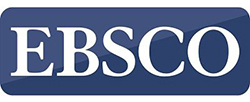Introduction of interactive teaching methods in modern schools
DOI:
https://doi.org/10.46502/issn.1856-7576/2023.17.02.17Palabras clave:
Еducation, the future generation, modern schools, the evolution of education, innovative methods.Resumen
Modern society puts forward new challenges for education, one of which is training people who are able to express critical opinions, find a way of communication in a new territory, who effectively establish new connections in a fast-moving reality. Intension, activity, independence, creativity, the ability to adapt to rapid changes – these personality traits are becoming the most important at the current stage of developing literature, and their formation requires using new approaches to the process of teaching literacy. Therefore, the purpose of the academic paper is to clarify the development of using innovative, non-standard, as well as critical thinking methods of teaching and learning at modern schools. In the course of the research, the following methods were used and applied, namely: analysis, synthesis, generalization, explanation and qualification of data. By the way, such outstanding modern and foreign scientists as O. Pometun, L. Pyrozhenko, as well as V. Bespalko, V. Monakhova paid particular attention to studying the issue of interactive learning methods and made a significant contribution in this direction. They explain innovations in education as an opportunity for interaction, being in the mode of conversation, dialogue, action. Moreover, their studies show that interactive learning makes it possible to significantly increase the percentage of learning the material, as it affects not only the student’s consciousness but also his feelings. The development of interactive learning elements can be found in the scientific works of V. Sukhomlynskyi, the works of innovative teachers of the 70-80s (V. Shatalov, E. Ilyin, S. Lysenkova, Sh. Amonashvili, etc.), the theory of developmental learning.
Citas
Blyth, C. (2018). Immersive technologies and language learning. Foreign Language Annals, 51(1), 225–232. https://doi.org/10.1111/flan.12327
El-Sabagh, H.A. (2021). Adaptive e-learning environment based on learning styles and its impact on development students' engagement. Int J Educ Technol High Educ, 18, 53 https://doi.org/10.1186/s41239-021-00289-4
Guerra, J., & Guevara, C. Y. (2017). Variables académicas, comprensión lectora, estrategias y motivación en estudiantes universitarios. Revista electrónica de investigación educativa, 19(2), 78–90. doi:10.24320/redie.2017.19.2.1125
Harackiewicz, J. M., & Hulleman, C. S. (2010). The importance of interest: The role of achievement goals and task values in promoting the development of interest. Social and Personality Psychology Compass, 4(1), 42–52.
Honcharenko S. (1997). Ukrainian Pedagogical Dictionary. Kyiv: Lybid, 376mp. https://acortar.link/7246S3
Hrynevych, L. (2016). Concept of the New Ukrainian School. Ministry of Education and Science of Ukraine. https://mon.gov.ua/storage/app/media/zagalna%20serednya/nova-ukrainska-shkola-compressed.pdf
İlçin, N., Tomruk, M., Yeşilyaprak, S. S., Karadibak, D., & Savcı, S. (2018). The relationship between learning styles and academic performance in TURKISH physiotherapy students. BMC Med Educ 18, 291 https://doi.org/10.1186/s12909-018-1400-2
Kostanjevec, S., Lovšin Kozina, F., & Erjavšek, M. (2018). The relationship between teachers’ education and their self-perceived competence for teaching home economics. Problems of education in the 21st century, 76(2), 175–187. https://doi.org/10.33225/pec/18.76.175
Kovalova, O. M., & Safargalina-Kornilova, N. A. (2016). Use of interactive teaching methods Innovative technologies in the system of professional training of students at KhNMU: materials of the XLVIII educational and methodological conference, Kharkiv, December 10, 2014. Kharkiv: KhNMU, 2014. Vol. 5. 114-118. https://repo.knmu.edu.ua/handle/123456789/8425
Lau, B. Y., Leong, R., Uljarevic, M., Lerh, J. W., Rodgers, J., & Hollocks, M. J. (2020). Anxiety in Young People with Autism Spectrum Disorder: Common and Autism-Related Anxiety Experiences and Their Associations with Individual Characteristics. Autism, 24(5), 1111–1126. doi:10.1177/1362361319886246
Nuthall, G. (2012). The Acquisition Of Conceptual Knowledge In The Classroom. SensePublishers, Rotterdam. https://doi.org/10.1007/978-94-6091-864-3_7
Pidgurska, V., Golubovska, I., Mykhailova, O., Humankova, O., & Grigorieva, T. (2023). Ue of innovative technologies for formation of economic competence of primary school students. Financial and Credit Activity Problems of Theory and Practice, 1(48), 473–482. https://doi.org/10.55643/fcaptp.1.48.2023.3922
Pometun, O., & Pyrozhenko, L. (2011). Interactive learning technologies: theory, practice, experience. K.: Publishing House, 135 p. https://docs.google.com/viewer?a=v&pid=sites&srcid=ZGVmYXVsdGRvbWFpbnxubWtwcmlyb2RuaWNpaGRpc2NpcGxpbnxneDozOTJhYzkzMGNiZjU2ODU
Rohrer, D., & Pashler, H. (2012). Learning styles: where's the evidence? Med. Educ., 46, 634–635. doi: 10.1111/j.1365-2923.2012.04273.x
Shaw, S., Gomes, P., Polotskaia, A., & Jankowska, A. (2015). The relationship between student health and academic performance: Implications for school psychologists. School Psychology International, 36.
Shevchuk, P., & Fenrich, F. (2005). Interactive teaching methods: Education. manual. Szczecin: WSAP Publishing House, 170 p. https://nmc-pto.rv.ua/DOK/IMN_2005.pdf
Wininger, S. R., Redifer, J. L., Norman, A. D., & Ryle, M. K. (2019). Prevalence of learning styles in educational psychology and introduction to education textbooks: a content analysis. Psychol. Learn. Teach, 18, 221–243. doi: 10.1177/1475725719830301
Descargas
Publicado
Cómo citar
Número
Sección
Licencia
Derechos de autor 2023 Viktoriia Bilyk, Roman Banak, Oleh Bardadym, Mariia Sokal, Olena Anichkina

Esta obra está bajo una licencia internacional Creative Commons Atribución 4.0.















